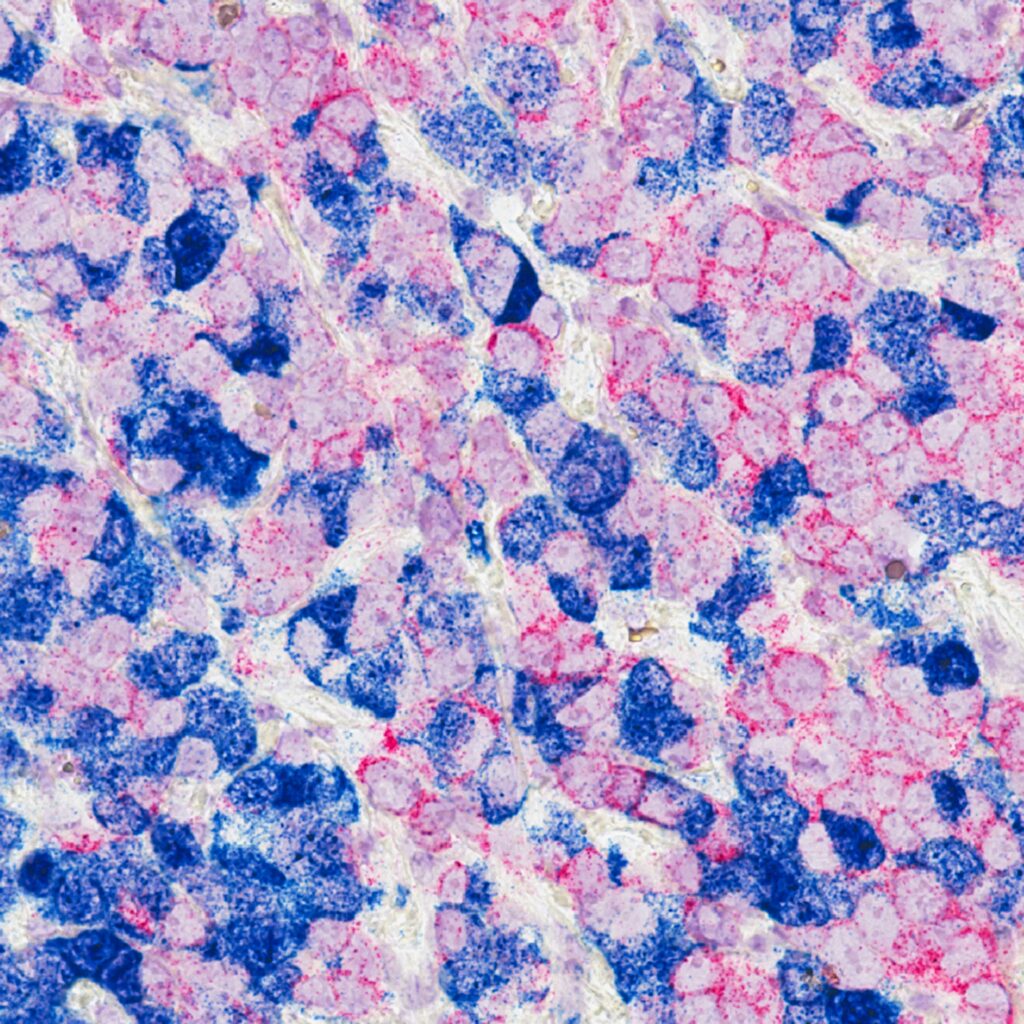Your cart is currently empty!

What You Should Know About Breast Cancer

Breast cancer. Two words that can change everything in an instant. It’s a diagnosis that many of us fear, but until it touches our lives, it can feel distant, like something that happens to other people somewhere else. But what if, one day, it’s not someone else? What if it’s you, your sister, your mother, your best friend?
I remember the day I first heard those words from one of my cousins. She is only five years older than me, and we have always been close. When she asked if I could come over, hearing something like this was the last thing I expected.
Suddenly, time slowed, and the world seemed to tilt just slightly off its axis. Everything was different. I saw the fear in her eyes and heard the uncertainty in her voice. I felt powerless and the helplessness of not knowing how to make it better. Breast cancer wasn’t just a vague, hypothetical statistic anymore; it was real, and it was here, and it was demanding to be faced.
In that moment, I realized how little I knew—how little most of us know—about this disease that affects so many. We hear about breast cancer awareness campaigns, we see the pink ribbons, but do we really understand all we need to know about breast cancer and the treatment options available? Do we know how to lower our risk or how to support someone going through it?
That’s why I’m dedicating this post to everyone who has ever been touched by breast cancer—whether you’ve faced it yourself, watched a loved one fight it, or simply want to be better informed. It’s finally time to talk about breast cancer openly and honestly, sharing not just the facts but also the fears, the hopes, and the actions we can take together.
Breast cancer impacts so many more than just the patients suffering from this devastating disease. Its reach can be felt by family, friends, and even acquaintances. The ripples are far-reaching and indiscriminate.
We’re in this together. So, let’s dive into the facts, break down the myths, and learn how to take control through awareness, early detection, or supporting each other in the fight. Because knowledge is power, and together, we can face this head-on.
So grab a cup of tea, settle in, and let’s have an honest conversation about breast cancer—the conversation we all need but may have been too afraid to start.
What is Breast Cancer?
Breast cancer is a type of cancer that starts in the cells of the breast. Cancer emerges when cells in the body begin to copy themselves out of control, forming a lump or mass called a tumor. In breast cancer, this uncontrolled growth happens in the cells that line the ducts (the tubes in the breast that carry milk to the nipple) or the lobules (the glands that make milk). Over time, these cancerous cells can overrun nearby tissues or spread to other parts of the body.
Different Types of Breast Cancer
There are several different types of breast cancer, but the two most common are:
Ductal Carcinoma In Situ (DCIS): This type starts in the cells lining the milk ducts and is considered non-invasive because it hasn’t spread outside the ducts.
Invasive Ductal Carcinoma (IDC): This is the most common type of breast cancer found today. It begins in the milk ducts and then spreads to nearby tissue. Once it spreads, it can also reach other parts of the body through the lymphatic system or bloodstream.
Other, less common types include invasive lobular carcinoma (ILC), which begins in the milk-producing lobules, and rare forms such as inflammatory breast cancer and triple-negative breast cancer.

How Common is Breast Cancer?
Breast cancer is the most common cancer in women worldwide, and it can also affect men, although this is much rarer. In the United States alone, about 1 in 8 women will be diagnosed with breast cancer at some point in their lives. According to the American Cancer Society, in 2024, it’s estimated that over 297,000 new cases of invasive breast cancer will be diagnosed in women, along with about 55,000 new cases of non-invasive (in situ) breast cancer. Around 2,600 new cases a year will be diagnosed in men.
Breast cancer is the second leading cause of cancer death in women, after lung cancer. However, thanks to better screening, early detection, and improved treatments, the death rate from breast cancer has steadily decreased over the past few decades. As of 2021, there are more than 3.8 million breast cancer survivors in the U.S. alone, showing that many people continue to live full lives after their diagnosis.
Why Awareness and Early Detection Matter
Understanding what breast cancer is and how it develops is the first step in prevention and early detection. The earlier breast cancer is found, the more treatment options are available, and the better the chance of survival. This is why regular screening, self-exams, and being aware of any changes in your breasts are so important.
Breast Cancer Statistics
Breast cancer is a significant health concern worldwide, affecting millions of people each year. Countless lives are impacted both directly and indirectly. Here are some key statistics to help illustrate the impact of breast cancer:
Global Statistics
Breast cancer is the most common cancer globally, with over 2.3 million new cases diagnosed in 2020. This accounts for nearly 1 in 4 cancer cases among women worldwide.
Breast cancer is also the leading cause of cancer death among women worldwide, with an estimated 685,000 deaths in 2020. However, survival rates vary significantly between countries, reflecting differences in access to early detection, diagnosis, and treatment.
United States Statistics
In the United States, breast cancer is the most commonly diagnosed cancer in women, excluding skin cancers. About 297,000 new cases of invasive breast cancer and 55,000 new cases of non-invasive breast cancer are expected to be diagnosed in 2024.
Breast cancer is the second leading cause of cancer death in American women, following lung cancer. About 42,250 women in the U.S. are expected to die from breast cancer this year.
Men can also be diagnosed with breast cancer, though it is much rarer. Each year, approximately 2,600 new cases of invasive breast cancer will be diagnosed in men.
Lifetime Risk and Survival Rates
The average risk of a woman in the United States developing breast cancer at some point in her life is about 1 in 8 (12.5%).
The 5-year relative survival rate for breast cancer varies by stage:
- Localized (cancer is confined to the breast): The 5-year survival rate is about 99%.
- Regional (cancer has spread to nearby lymph nodes): The 5-year survival rate is about 86%.
- Distant (cancer has spread to distant parts of the body, such as the lungs or liver): The 5-year survival rate is about 30%.
Overall, the 5-year relative survival rate for all stages of breast cancer combined is approximately 90%. What this means is that after five years, 90% of patients diagnosed with breast cancer will still be alive.
Impact of Early Detection
The decline in breast cancer deaths over the past three decades (around 40% since 1989) is attributed to improvements in early detection and treatment. Early detection through regular mammograms and self-exams plays a crucial role in finding cancer at an earlier, more treatable stage. Awareness has also played an essential role, along with work to destroy the negative stigma regarding the diagnosis.
Age and Demographics
The incidence rates of breast cancer vary by race and ethnicity. White and Black women have the highest rates. Black women have a slightly higher risk of death from breast cancer. This is due to factors such as later-stage diagnoses and differences in access to treatment.

Navigating the diagnosis, treatment, and aftermath of breast cancer can be an incredibly intimidating journey. This is almost always filled with fear, uncertainty, doubt, and near-impossible decisions, regardless of if you are the patient or it is someone close to you. It is not uncommon to feel lost, helpless, or alone. However, this can also be a time to discover strength, resilience, and community. You don’t have to do this alone. There are many resources available to help guide you through this journey.
I hope this post has given you a better understanding of what breast cancer is, and the importance of early detection. But more than that, I hope it has helped you feel seen, understood, and empowered to take control of your health or support someone else through their fight.
Here’s How You Can Take Action Today:
- Get Screened: If you still need to get a mammogram or are due for one, schedule it today. Early detection can make all the difference.
- Know Your Risk: Talk to your doctor about your personal and family history. They can help you better understand your risk factors and make informed decisions about your health.
- Support Others: Whether it’s a friend, family member, or co-worker, reach out to someone you know who might be facing breast cancer. Sometimes, a simple “I’m here for you” can mean the world.
- Share Knowledge: Spread the word about breast cancer awareness to help combat stigma and remind others to do their self-check. Please also share this post to help educate and empower those around you to take control of their health. Knowledge is power.
And if you’d like to stay connected, join my newsletter! By subscribing, you’ll receive updates, cutting-edge information, the latest research, and resources directly to your inbox. You’ll also be the first to know about new blog posts, personal stories, and opportunities to be part of a community that supports one another in this journey.
Sources and Further Reading
Comments
3 responses to “What You Should Know About Breast Cancer”
-
Wow, that’s what I was exploring for, what a data!
predsent hedre aat thi weblog, thanks adnin of this web site. -
Howdy just wanted too give yyou a quick heads up.
The words inn your conent ssem to be runninmg offf
the screen iin Safari. I’m not sure if this iis a formatting issue oor somethuing
too ddo witrh bdowser compatibillity butt I thhought I’d
post too let yoou know. The design lpok great though!
Hope youu get the issue fixed soon. Kudos-
Thank you so much. I will check it out!
-

Leave a Reply